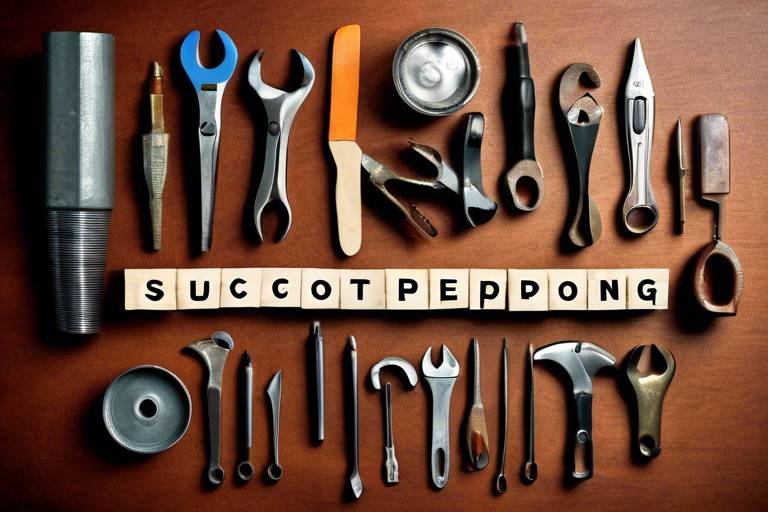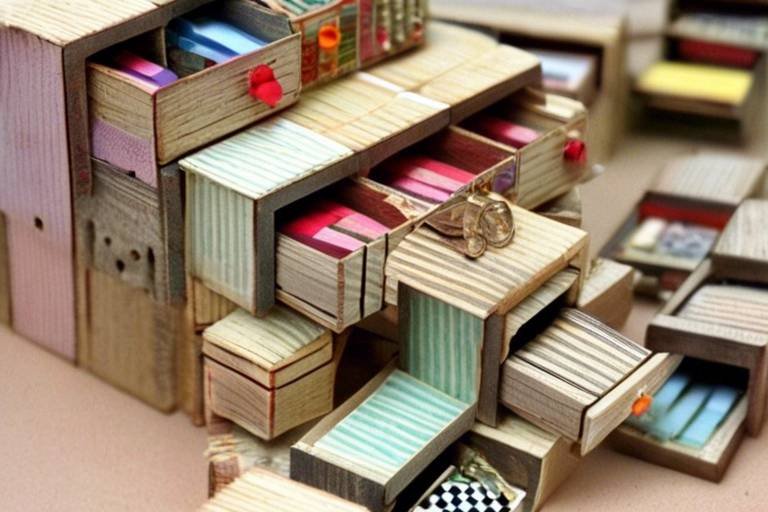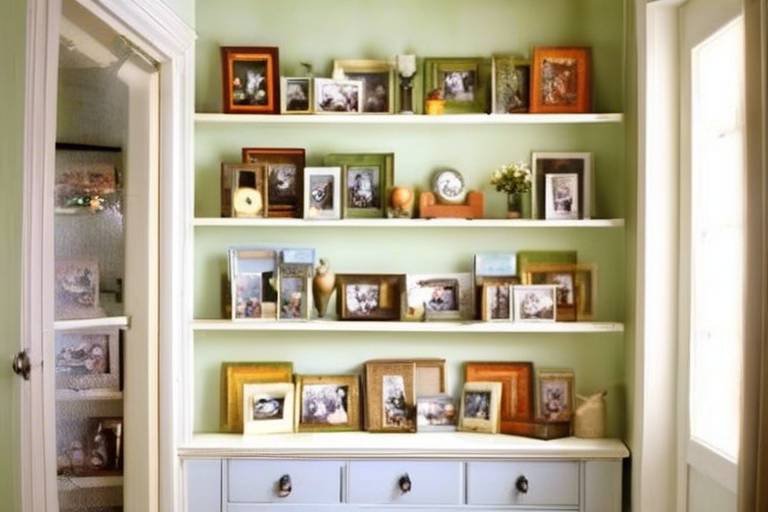Create Energy-Efficient Solutions by Upcycling Solar Panels
In a world where sustainability is becoming increasingly important, the concept of upcycling old solar panels is emerging as a game-changer for both environmental conservation and energy efficiency. Have you ever thought about what happens to solar panels once they reach the end of their operational life? Instead of letting them end up in landfills, we can repurpose them into innovative solutions that not only reduce waste but also provide sustainable energy options. This article explores the exciting potential of upcycling solar panels, showcasing how creativity and ingenuity can transform discarded materials into valuable resources. Imagine a future where old solar panels are not just waste but a treasure trove of possibilities—sounds intriguing, right?
Upcycling solar panels is crucial in minimizing electronic waste and extending the life cycle of renewable energy resources. The environmental benefits are profound; by repurposing these valuable materials, we can significantly reduce landfill contributions and promote a circular economy. Did you know that the solar industry is projected to grow tremendously, yet the disposal of old panels poses a major challenge? By embracing upcycling, we can turn this challenge into an opportunity. Economically, upcycling offers advantages too. It can lead to job creation in the recycling and creative industries, while also providing cost-effective solutions for energy generation. This dual benefit of environmental and economic value makes upcycling solar panels an essential practice in our quest for sustainability.
There are various creative methods for upcycling solar panels, from DIY projects to commercial applications. Whether you're a homeowner looking to spruce up your space or a business seeking eco-friendly solutions, the possibilities are endless. For instance, you can transform old panels into functional garden features or even unique pieces of furniture. The key is to harness the potential of these materials and think outside the box. Here are some practical techniques that individuals and businesses can implement:
- Creating solar-powered outdoor lights
- Designing solar panel art installations
- Building solar-powered benches for public parks
- Integrating panels into greenhouses for energy-efficient gardening
Artists and designers are increasingly using upcycled solar panels to create stunning art installations. This creative approach not only breathes new life into discarded panels but also raises awareness about sustainability. Imagine walking through a gallery where the light is powered by the very art you’re admiring! Artists are finding innovative ways to incorporate solar technology into their work, making statements about renewable energy while creating visually captivating pieces. This movement illustrates how art can play a pivotal role in promoting environmental consciousness.
Integrating upcycled solar panels into garden designs can enhance aesthetics and functionality. Picture this: a beautiful garden illuminated by solar-powered lights made from old panels, or a serene water feature that runs entirely on renewable energy. These garden features not only save on energy costs but also showcase a commitment to sustainability. Think of your garden as a canvas where you can paint with solar energy, creating a vibrant, eco-friendly space that stands out in your neighborhood.
Upcycling solar panels into functional furniture pieces is an emerging trend that combines style and sustainability. Imagine a chic outdoor table that charges your devices while you enjoy a sunny day with friends. The possibilities are endless, and the designs can be as unique as your imagination. By incorporating solar technology into everyday items, we can create practical solutions that not only look good but also contribute to energy savings. This trend is a perfect example of how upcycling can intersect with modern design.
Community initiatives can greatly benefit from upcycled solar panels. By collaborating on projects that utilize old panels, communities can provide energy solutions in underserved areas, promoting social equity and sustainability. For instance, imagine a neighborhood where community gardens are powered by solar energy, or local schools equipped with solar-powered classrooms. These projects not only provide tangible benefits but also foster a sense of community and shared responsibility towards the environment.
Upcycling solar panels can lead to significant cost savings and new revenue streams. For individuals, repurposing old panels for personal use—like energy generation or home improvements—can dramatically reduce utility bills. Think about it: by harnessing the power of the sun, you not only save money but also increase the value of your home. For businesses, there are lucrative opportunities in the upcycling industry, with a growing demand for eco-friendly products. This shift towards sustainability is not just a trend; it’s a smart economic move.
Entrepreneurs can capitalize on the demand for eco-friendly products by selling upcycled solar panel creations. Whether it’s unique garden features or stylish furniture, there’s a market eager for innovative solutions. By tapping into this niche, businesses can not only generate profits but also contribute to a more sustainable future. The upcycling industry is ripe with opportunities, and those who act now can reap the benefits.
Households can save money by upcycling solar panels for personal use, such as energy generation or home improvements. This practice not only leads to reduced utility bills but also increases home value. Imagine transforming your backyard into a solar-powered oasis, where you can host gatherings without worrying about the electricity costs. By investing in upcycled solar solutions, families can enjoy a sustainable lifestyle while keeping their finances in check.
Q: What can I do with old solar panels?
A: Old solar panels can be upcycled into various products, including garden features, furniture, and art installations.
Q: Are there any economic benefits to upcycling solar panels?
A: Yes! Upcycling can lead to cost savings on energy bills and create new revenue streams for businesses.
Q: How does upcycling contribute to sustainability?
A: Upcycling reduces electronic waste and promotes a circular economy by extending the life cycle of materials.

The Importance of Upcycling Solar Panels
Upcycling solar panels is not just a trend; it’s a vital step towards a more sustainable future. As we grapple with the increasing amounts of electronic waste, the need to find innovative solutions to repurpose these valuable resources has never been more pressing. Did you know that millions of solar panels reach the end of their life cycle each year? Instead of tossing them aside, we can breathe new life into them through upcycling. This practice not only minimizes waste but also extends the life cycle of renewable energy resources, making it a win-win for both the environment and our pockets.
When we think about the environmental benefits of upcycling solar panels, several key factors come to mind:
- Reduction of Electronic Waste: By repurposing solar panels, we significantly cut down on the amount of electronic waste that ends up in landfills. This is crucial, considering that electronic waste can take hundreds of years to decompose.
- Conservation of Resources: Upcycling helps conserve the raw materials needed to manufacture new solar panels. This not only saves energy but also reduces the environmental footprint associated with mining and processing these materials.
- Promotion of Renewable Energy: Repurposing old solar panels fosters a culture of sustainability and encourages more people to adopt renewable energy solutions.
Economically, the advantages of upcycling solar panels are equally compelling. By finding new uses for old panels, individuals and businesses can tap into a growing market for eco-friendly products. This can lead to the creation of jobs in the upcycling sector, boosting local economies. Moreover, upcycling can result in significant cost savings for households. Imagine transforming an old solar panel into a DIY energy generator for your home—this not only reduces your carbon footprint but also lowers your utility bills!
In essence, upcycling solar panels is about more than just waste reduction; it’s about fostering a sustainable mindset that values creativity and resourcefulness. As we continue to innovate and find new ways to repurpose these materials, we pave the way for a greener, more sustainable future. So, the next time you come across an old solar panel, think twice before discarding it. It could very well be the key to creating a more sustainable world.

Upcycling solar panels is not just a trend; it's a revolution in how we think about waste and sustainability. With a little creativity and resourcefulness, old solar panels can be transformed into innovative solutions that not only reduce waste but also provide practical benefits. Whether you're a DIY enthusiast or a business owner looking for eco-friendly alternatives, there are numerous methods to repurpose these valuable materials. Let's dive into some of the most exciting ways to give old solar panels a new lease on life.
One of the most popular methods is turning old solar panels into **solar-powered garden features**. Imagine walking through a garden illuminated by soft, solar-powered lights crafted from upcycled panels. Not only does this enhance the beauty of outdoor spaces, but it also promotes energy efficiency. You can create stunning water features, like fountains or ponds, powered entirely by the sun. This not only saves on energy costs but also adds a unique touch to any landscape.
Another fascinating approach is **transforming solar panels into art**. Artists around the globe are embracing the challenge of using discarded solar panels as their canvas. From eye-catching sculptures to intricate wall installations, these creative projects not only beautify public spaces but also serve as powerful reminders of the importance of sustainability. By showcasing these artworks, artists can spark conversations about renewable energy and environmental responsibility, making art a vehicle for change.
For those interested in functional design, **solar-powered furniture** is an emerging trend that blends style with sustainability. Imagine a sleek coffee table that not only serves as a centerpiece in your living room but also charges your devices using solar energy. Designers are experimenting with various styles, from minimalist to rustic, ensuring that there’s something for everyone. This innovative approach not only reduces reliance on traditional power sources but also adds a unique flair to home decor.
Furthermore, **community projects** are harnessing the power of upcycled solar panels to provide energy solutions in underserved areas. By collaborating with local organizations, groups can install solar panels in community centers, schools, and even homes, creating a sustainable energy source that benefits everyone. This not only promotes social equity but also empowers communities to take charge of their energy needs, fostering a sense of ownership and pride.
In summary, the methods for upcycling solar panels are as diverse as they are innovative. Whether you're enhancing your garden, creating art, designing furniture, or contributing to community projects, the possibilities are endless. The beauty of upcycling lies in its ability to transform waste into something valuable, proving that sustainability can be both practical and aesthetically pleasing.
- What are the benefits of upcycling solar panels? Upcycling solar panels reduces waste, conserves resources, and can create new energy solutions while also providing economic benefits.
- Can I upcycle solar panels myself? Absolutely! Many DIY projects exist that allow you to creatively repurpose old solar panels for personal use.
- Are there any safety concerns when working with old solar panels? Yes, it’s important to handle solar panels carefully, as they may contain hazardous materials. Always follow safety guidelines.
- How can communities benefit from upcycled solar panels? Communities can utilize upcycled panels to create sustainable energy solutions, improving access to electricity in underserved areas.

In today's world, where sustainability is becoming increasingly important, artists and designers are stepping up to the challenge by using upcycled solar panels as a medium for their creative expressions. Imagine walking through an art gallery and being mesmerized by a stunning installation that not only captivates the eye but also carries a message about environmental conservation. This is the magic of transforming discarded solar panels into art. Not only does this practice breathe new life into what would otherwise be waste, but it also serves as a powerful tool for raising awareness about sustainability.
Artists are finding innovative ways to incorporate these panels into their work, creating pieces that reflect both beauty and functionality. For instance, some have turned old solar panels into intricate wall art, where the reflective surfaces catch the light in mesmerizing ways. Others have crafted large-scale installations that utilize the panels to generate energy while simultaneously serving as a visual statement. This dual purpose not only highlights the potential of solar technology but also challenges traditional notions of what art can be.
Moreover, the use of upcycled solar panels in art can inspire community engagement. Local artists often collaborate with environmental organizations to create installations that tell a story about the importance of renewable energy. These projects can be showcased in public spaces, sparking conversations among community members about sustainability and the future of energy. In this way, art becomes a catalyst for change, encouraging people to think critically about their consumption habits and the impact of waste on our planet.
Here's a quick overview of how artists are transforming panels into art:
| Art Form | Description |
|---|---|
| Wall Art | Using panels to create visually striking pieces that reflect light and color. |
| Installations | Large-scale works that incorporate solar panels to generate energy and engage viewers. |
| Functional Art | Designs that serve a practical purpose, such as solar-powered lighting or furniture. |
By embracing this innovative approach, artists not only contribute to the reduction of electronic waste but also challenge the art community to rethink the materials they use. The transformation of solar panels into art is a beautiful reminder that creativity knows no bounds and that sustainability can be woven into every aspect of our lives.
- What types of art can be created from upcycled solar panels?
Artists can create a variety of art forms, including wall art, sculptures, and functional pieces that serve a dual purpose. - How do upcycled solar panels contribute to sustainability?
By repurposing panels, artists help reduce electronic waste and promote the use of renewable energy sources. - Can anyone get involved in upcycling solar panels for art?
Absolutely! Artists, hobbyists, and DIY enthusiasts can all explore ways to incorporate solar panels into their projects.

Imagine stepping into your garden and being greeted by the soft glow of lights powered by the sun, all thanks to upcycled solar panels. These panels, once deemed obsolete, can be transformed into stunning garden features that not only enhance the aesthetic appeal of your outdoor space but also promote sustainability. By integrating upcycled solar panels into your garden design, you can create a unique environment that harmonizes beauty and functionality. From solar-powered lighting to innovative water features, the possibilities are endless!
One of the most exciting aspects of using solar panels in your garden is the opportunity to create solar-powered lighting. Picture this: ambient lights illuminating your pathways or highlighting your favorite plants, all powered by the sun during the day. This not only reduces your electricity bill but also minimizes your carbon footprint. You can easily repurpose old panels to power LED lights, making your garden a magical place to unwind during the evenings. Just imagine hosting a dinner party under the stars, with your garden glowing softly around you!
Another fantastic application of upcycled solar panels in gardens is the creation of water features. Whether it’s a small fountain or a pond pump, solar panels can provide the energy needed to keep the water flowing. This not only adds a soothing sound to your garden but also attracts wildlife, creating a vibrant ecosystem. The gentle trickle of water can elevate your outdoor space, making it a serene retreat from the hustle and bustle of everyday life.
Furthermore, you can get creative with vertical gardens by incorporating solar panels into their design. Imagine a wall of greenery that not only purifies the air but also utilizes solar energy to power small devices or lights. This fusion of technology and nature not only saves space but also makes a bold statement about your commitment to sustainability. By embracing this innovative approach, you’re not just gardening; you’re making a statement about eco-friendliness and creativity.
Incorporating upcycled solar panels into your garden design is not just about aesthetics; it's also a smart way to promote environmental conservation. By giving new life to old panels, you’re reducing waste and demonstrating that sustainability can be both functional and beautiful. As you plan your garden, think about how you can utilize these panels to create features that reflect your personal style while also contributing to a greener planet.
In conclusion, the integration of upcycled solar panels into garden features opens up a world of possibilities. From lighting to water features and vertical gardens, the potential for creativity is limitless. So, why not take the plunge and start transforming your garden into a solar-powered oasis? The earth will thank you, and so will your neighbors!
- What are the benefits of using upcycled solar panels in my garden?
Upcycled solar panels can help reduce electricity costs, minimize waste, and enhance the aesthetic appeal of your garden. - Can I install solar-powered lights myself?
Yes! Many solar lighting kits are designed for easy DIY installation, making it accessible for anyone to enhance their garden. - How do solar water features work?
Solar water features use solar panels to power pumps, which circulate water, creating beautiful fountains or ponds without relying on grid electricity.

Imagine sitting in your living room, surrounded by stunning furniture that not only looks good but also contributes to a sustainable future. Solar-powered furniture design is revolutionizing the way we think about our living spaces. By incorporating old solar panels into furniture, designers are creating pieces that are not just functional but also eco-friendly. This trend is gaining momentum as more people become aware of the importance of sustainability in their daily lives.
From coffee tables that charge your devices to outdoor benches with built-in solar lighting, the possibilities are endless. These innovative designs not only utilize discarded solar panels but also promote a lifestyle that values environmental consciousness. Why should we settle for ordinary furniture when we can have pieces that contribute to energy savings?
One of the most exciting aspects of solar-powered furniture is its versatility. For instance, a solar-powered patio table can be equipped with USB ports, allowing you to charge your phone while enjoying a sunny day outdoors. Similarly, a solar bench can illuminate your garden at night, creating a beautiful ambiance while reducing your electricity bill. The integration of solar technology into furniture is not just a trend; it's a movement towards a greener future.
Furthermore, the aesthetics of solar-powered furniture can be breathtaking. Designers are experimenting with various materials and styles, blending modern design with sustainable practices. A rustic wooden bench with sleek solar panels on top can serve as a striking centerpiece in any garden, while a minimalist desk with integrated solar charging capabilities can enhance productivity in your home office. The fusion of art and technology in furniture design is paving the way for a new era of sustainable living.
To illustrate the potential of solar-powered furniture design, consider the following table showcasing some innovative products:
| Product | Description | Benefits |
|---|---|---|
| Solar Charging Coffee Table | A stylish coffee table with built-in solar panels | Charges devices while you relax |
| Illuminated Garden Bench | A bench that lights up at night using solar energy | Enhances outdoor aesthetics and safety |
| Solar-Powered Lounge Chair | A comfortable chair with USB ports for charging | Perfect for outdoor relaxation |
In conclusion, the rise of solar-powered furniture design represents a significant shift towards sustainability and innovation. As we seek to reduce our ecological footprint, incorporating solar panels into our furniture not only enhances our living spaces but also contributes to a greener planet. So, why not embrace this trend and invest in pieces that are both stylish and sustainable? After all, every small step towards sustainability counts!
- What types of furniture can be powered by solar panels?
Many types of furniture can be designed to incorporate solar panels, such as tables, benches, chairs, and even outdoor decor. - Are solar-powered furniture pieces expensive?
While the initial cost may be higher than traditional furniture, the long-term savings on energy bills and the environmental benefits often make them a worthwhile investment. - How do I maintain solar-powered furniture?
Maintenance is generally minimal. Regular cleaning of the solar panels and ensuring they receive adequate sunlight will keep them functioning optimally.
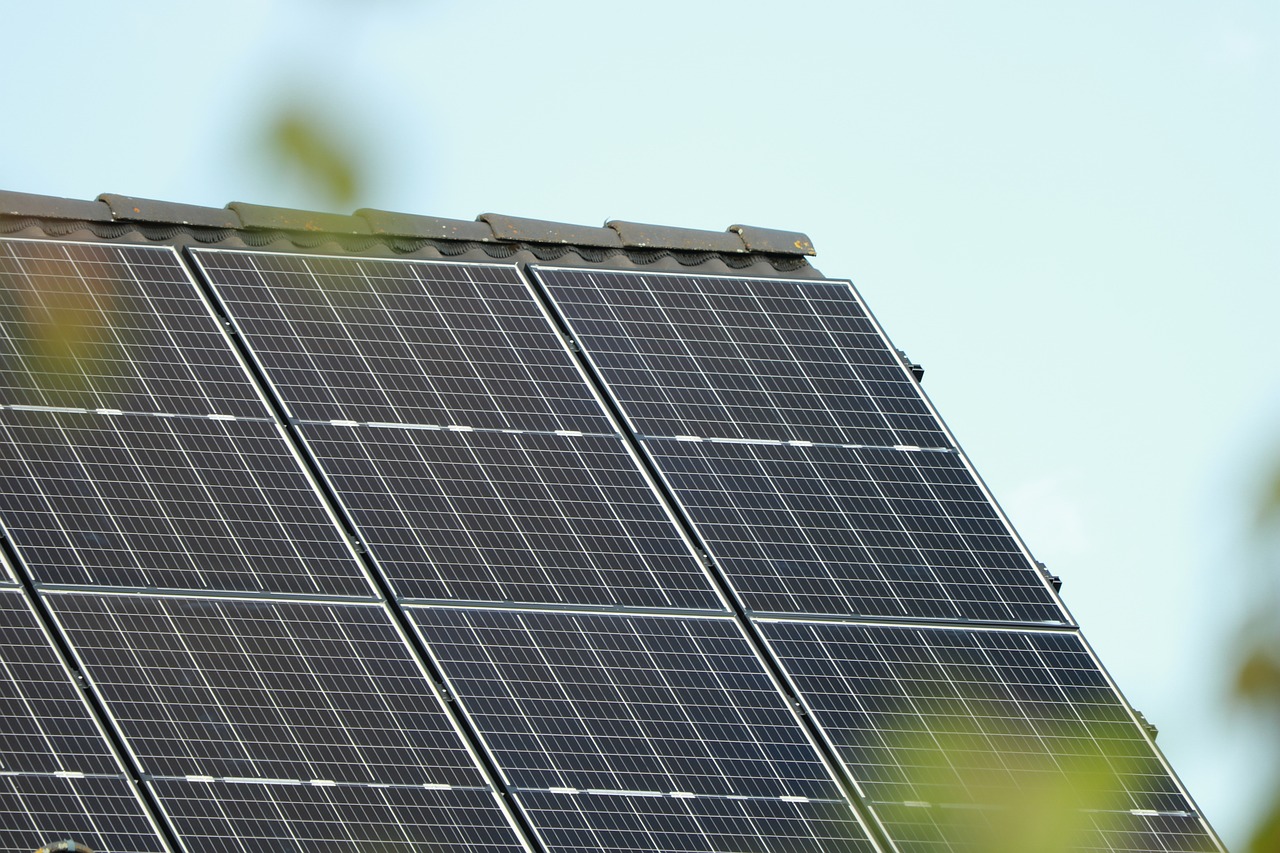
Community projects are a fantastic way to harness the power of upcycled solar panels, creating not just energy solutions but also fostering a sense of unity and purpose among residents. Imagine a neighborhood where old solar panels are transformed into vital energy sources for public spaces, schools, and community centers. This transformation not only addresses energy needs but also promotes social equity by providing access to renewable energy in underserved areas.
One of the most compelling aspects of implementing solar panels in community projects is their ability to reduce energy costs for local organizations. By repurposing old panels, communities can create solar installations that significantly lower utility bills. For instance, a community center might use upcycled solar panels to power its facilities, allowing it to allocate more funds towards programs and services that benefit residents. This is a win-win situation: you save money while also investing in the community.
Moreover, these projects can serve as educational platforms. By involving local schools and educational institutions, communities can teach students about sustainability, renewable energy, and the importance of reducing waste. Workshops can be organized to educate residents on how to upcycle solar panels, empowering them to take an active role in their energy future. This hands-on approach not only raises awareness but also cultivates a culture of sustainability.
To illustrate how communities are leveraging upcycled solar panels, here are a few examples of successful projects:
- Community Solar Gardens: These gardens allow residents to invest in solar energy collectively, where upcycled panels are used to generate power for the entire neighborhood.
- Solar-Powered Charging Stations: Parks and public spaces can incorporate charging stations powered by upcycled solar panels, providing convenient access to renewable energy for all visitors.
- Energy for Local Events: Festivals and community gatherings can utilize energy generated from upcycled solar panels, ensuring that events are not only fun but also environmentally friendly.
In summary, implementing upcycled solar panels in community projects is not just about energy generation; it’s about building connections, saving money, and fostering a sustainable future. As communities come together to repurpose these valuable resources, they pave the way for a greener tomorrow, demonstrating that collaboration and innovation can truly make a difference.
- What are the benefits of using upcycled solar panels in community projects? Upcycled solar panels help reduce energy costs, promote sustainability, and foster community engagement.
- How can communities get started with upcycling solar panels? Communities can start by organizing workshops, partnering with local organizations, and identifying potential sites for solar installations.
- Are there any financial incentives for community projects using solar energy? Yes, many governments offer grants and tax incentives for renewable energy projects, including those that utilize upcycled materials.
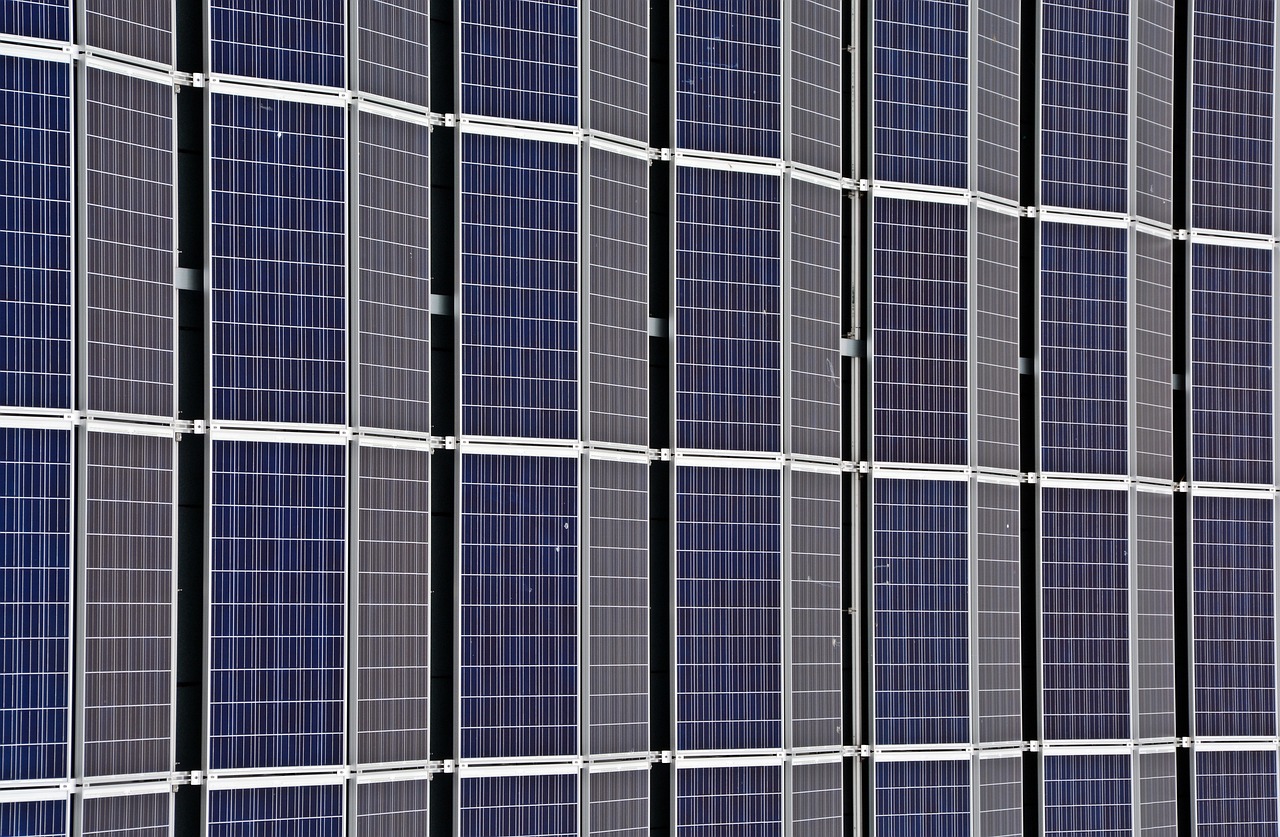
Upcycling solar panels offers a plethora of economic benefits that can transform the way individuals and businesses approach sustainability. Rather than viewing old solar panels as waste, they can be seen as valuable assets that can generate cost savings and create new revenue streams. The financial implications of repurposing these panels are profound, especially in a world increasingly focused on green solutions.
One of the most significant benefits of upcycling is the potential for cost savings for households. By repurposing old solar panels, homeowners can create their own energy solutions, drastically reducing their utility bills. Imagine transforming a discarded solar panel into a DIY solar generator for your home! Not only does this allow you to harness solar energy without the hefty price tag of new equipment, but it also increases the value of your property. Homes equipped with renewable energy solutions are increasingly appealing to buyers, making upcycling a smart investment.
For businesses, the economic advantages can be even more pronounced. By integrating upcycled solar panels into their operations, companies can minimize their energy costs and enhance their corporate social responsibility (CSR) profile. This not only attracts environmentally-conscious consumers but can also lead to tax benefits and incentives from government programs aimed at promoting sustainability. In fact, many businesses have found that utilizing upcycled materials in their products can significantly reduce production costs while appealing to a growing market of eco-friendly consumers.
Moreover, the upcycling industry itself is blossoming into a lucrative market. Entrepreneurs can tap into this growing trend by creating and selling products made from upcycled solar panels. From decorative garden lights to functional furniture, the possibilities are vast. The demand for eco-friendly products is skyrocketing, and those who can innovate and create unique items from old solar panels stand to benefit significantly. The potential for profit in this niche market is substantial, with many businesses reporting increased sales and customer loyalty as they embrace sustainable practices.
To illustrate the economic impact of upcycling solar panels, consider the following table outlining potential savings and revenue opportunities:
| Upcycling Option | Estimated Cost Savings | Potential Revenue |
|---|---|---|
| DIY Solar Generator | $300-$500 per year | N/A |
| Solar-Powered Garden Features | $100-$200 per year | $50-$150 per item sold |
| Upcycled Furniture | N/A | $200-$500 per item sold |
As shown in the table above, the potential for savings and revenue generation through upcycling solar panels is both tangible and significant. By viewing these panels as resources rather than waste, we can foster a culture of sustainability that not only benefits the environment but also drives economic growth.
Q: What are the main economic benefits of upcycling solar panels?
A: Upcycling solar panels can lead to cost savings on energy bills, increased property value, and opportunities for entrepreneurs to create and sell eco-friendly products.
Q: How can households benefit from upcycling solar panels?
A: Households can save money by creating DIY energy solutions using old solar panels, which can drastically reduce utility costs and enhance home value.
Q: Are there any financial incentives for businesses that upcycle?
A: Yes, many businesses can benefit from tax incentives and grants aimed at promoting sustainable practices, as well as increased customer loyalty from eco-conscious consumers.
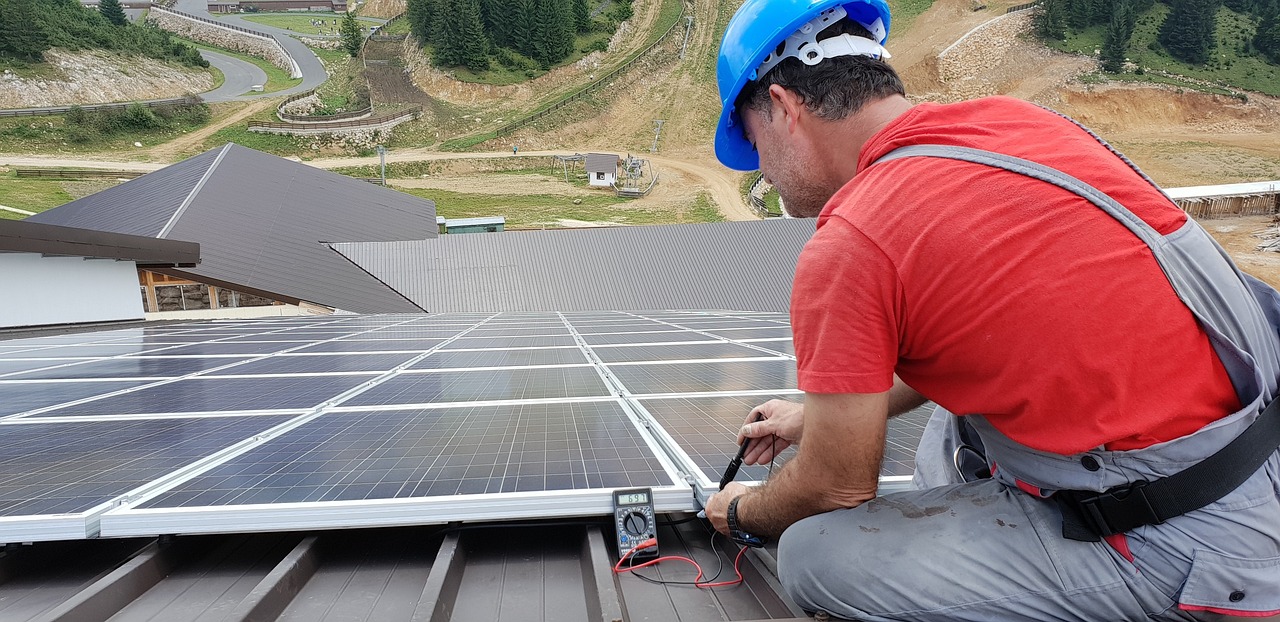
In today's eco-conscious world, the demand for sustainable products is skyrocketing, and upcycled solar panels are no exception. Entrepreneurs who venture into this market are not just helping the environment; they're also tapping into a lucrative opportunity. Imagine transforming discarded solar panels into trendy garden lights or chic furniture pieces—these aren’t just creative projects; they’re potential gold mines!
But what exactly makes upcycled solar products so appealing? For starters, consumers are increasingly looking for ways to reduce their carbon footprint, and purchasing upcycled goods is a fantastic way to do just that. By offering products made from old solar panels, sellers can cater to this growing market of eco-conscious buyers. Moreover, the uniqueness of these items often adds to their charm, as each piece tells a story of transformation and sustainability.
To get started in selling upcycled solar products, consider the following avenues:
- Online Marketplaces: Platforms like Etsy, eBay, and Amazon Handmade are perfect for reaching a broad audience. You can showcase your creativity and craftsmanship while connecting with buyers who appreciate sustainable living.
- Local Craft Fairs and Farmers Markets: Setting up a booth at local events can help you engage directly with customers. This face-to-face interaction allows you to share the story behind your products, which can be a powerful selling point.
- Social Media: Leverage platforms like Instagram and Pinterest to showcase your creations. Visual content is key here; high-quality images of your upcycled products can attract attention and drive sales.
Moreover, collaborating with local businesses can open up additional channels for sales. For instance, partnering with home and garden stores to feature your upcycled products can enhance visibility and credibility. The key is to build a brand that resonates with sustainability and innovation, making your products not just items for sale, but symbols of a greener lifestyle.
As you embark on this journey, remember that storytelling is crucial. Each upcycled product has a narrative that can captivate potential buyers. Whether it’s a beautiful lamp made from an old solar panel or a stylish bench for the garden, sharing how these items were made and the positive impact they have on the environment can create a deeper connection with your audience.
In conclusion, selling upcycled solar products is not just a business opportunity; it’s a chance to be part of a larger movement towards sustainability. By embracing creativity and innovation, you can turn what was once seen as waste into valuable products that not only benefit you economically but also contribute positively to the planet.
1. What types of products can be made from upcycled solar panels?
Upcycled solar panels can be transformed into a variety of products, including garden lights, furniture, decorative art pieces, and even energy systems for small-scale use.
2. Where can I sell my upcycled solar products?
You can sell your products on online marketplaces like Etsy and Amazon, at local craft fairs, and through social media platforms. Collaborating with local businesses can also be beneficial.
3. What are the environmental benefits of upcycling solar panels?
Upcycling solar panels helps reduce electronic waste, conserves resources, and promotes a circular economy by extending the life cycle of materials that might otherwise end up in landfills.

When it comes to household expenses, finding ways to save money is always a priority. Imagine being able to cut down on your energy bills while also contributing to a healthier planet. Upcycling old solar panels can make this dream a reality! By repurposing these panels, households can generate their own energy, leading to significant cost savings over time. It’s like turning trash into treasure—who wouldn’t want that?
One of the most appealing aspects of upcycling solar panels is the potential for reduced utility bills. By creating a DIY solar energy system using old panels, homeowners can harness the sun’s power to meet their energy needs. This not only decreases reliance on traditional energy sources but also provides a cushion against rising electricity rates. In fact, studies show that households that utilize solar energy can save anywhere from 20% to 50% on their monthly energy costs!
Moreover, the initial investment in upcycling solar panels can pay off in the long run. While there may be some upfront costs associated with installation and setup, the savings accrued over time can far outweigh these expenses. Let’s break it down:
| Expense Type | Traditional Energy Source | Upcycled Solar Energy |
|---|---|---|
| Initial Setup Cost | High | Moderate |
| Monthly Energy Bill | $150 | $75 |
| Annual Savings | $0 | $900 |
In addition to lowering energy bills, upcycling solar panels can enhance your home’s value. Homes equipped with solar energy systems are increasingly sought after in the real estate market. Buyers are often willing to pay a premium for properties that promise lower energy costs and sustainability. Think of it as an investment—one that not only pays for itself over time but also adds to your home’s appeal.
Furthermore, upcycling solar panels can lead to creative home improvements. For instance, you can use old panels to power outdoor lighting, heat water for your pool, or even create a solar-powered charging station for your gadgets. Each of these projects not only adds functionality to your home but also contributes to energy savings. It's like having your cake and eating it too!
In conclusion, upcycling solar panels is not just an environmentally friendly choice; it’s a smart financial decision for households looking to save money. By embracing this innovative approach, homeowners can enjoy lower utility bills, increase their property value, and contribute to a sustainable future. So, why not take that leap? Your wallet and the planet will thank you!
- What are the benefits of upcycling solar panels? Upcycling solar panels can lead to reduced energy bills, increased home value, and a positive impact on the environment.
- How much can I save by upcycling solar panels? Households can save between 20% to 50% on their monthly energy costs, depending on their energy usage and the efficiency of the upcycled panels.
- Is it difficult to set up a DIY solar energy system? While there may be some challenges, many resources are available to guide you through the process, making it accessible for most homeowners.
- Can upcycled solar panels really increase my home’s value? Yes! Homes with solar energy systems are often more attractive to buyers and can command higher prices in the market.
Frequently Asked Questions
- What are the environmental benefits of upcycling solar panels?
Upcycling solar panels significantly reduces electronic waste, which is a growing concern in our modern world. By repurposing these panels, we not only extend their life cycle but also contribute to conserving valuable resources and minimizing landfill overflow. This practice promotes sustainability and helps mitigate the environmental impact of discarded solar technology.
- Can I use old solar panels for DIY projects?
Absolutely! Old solar panels can be transformed into a variety of DIY projects. From creating solar-powered garden lights to building unique furniture pieces, the possibilities are endless. With a little creativity and some basic tools, you can harness the energy of the sun while adding a personal touch to your home or garden.
- How can upcycled solar panels benefit my community?
Upcycled solar panels can play a pivotal role in community projects, especially in underserved areas. By providing renewable energy solutions, these panels can help reduce energy costs and promote social equity. Community initiatives that utilize upcycled solar panels can enhance local sustainability efforts and empower residents by providing them with access to clean energy.
- What are some creative uses for upcycled solar panels?
There are countless creative uses for upcycled solar panels! Artists are using them to create stunning art installations, while homeowners are incorporating them into garden designs for lighting and water features. Additionally, innovative furniture designers are crafting stylish and functional pieces that harness solar energy, making sustainability both beautiful and practical.
- Is there a market for selling upcycled solar panel products?
Yes, there is a growing market for eco-friendly products, and upcycled solar panel creations are in high demand. Entrepreneurs can capitalize on this trend by selling unique items that appeal to environmentally conscious consumers. Whether it’s garden art, solar-powered furniture, or home decor, the potential for profit in the upcycling industry is substantial.
- How can upcycling solar panels save me money?
Upcycling solar panels can lead to significant cost savings for households. By repurposing old panels for personal energy generation or home improvements, you can reduce your utility bills and even increase your home’s value. It’s a smart investment that not only benefits your wallet but also contributes to a more sustainable future.



